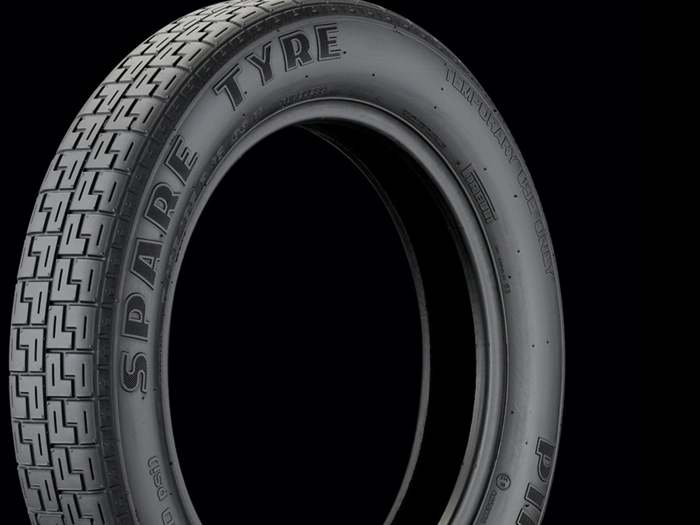- Home
- Transportation
- Cars
- 10 things that make changing a tire much, much easier
10 things that make changing a tire much, much easier
1. Know your jack.

2. Make sure the temporary spare is in good shape.

The "donut" needs to be checked out every so often. You don't want it to be flat, too — kind of defeats the purpose of having a backup.
The best way to do this is to make it a routine when you check your tire pressure. On modern cars, you'll know you have tire-pressure issues because the car will alert you, via a warning light. So when you investigate that problem, take a few extra minutes to check out your temporary spare.
You don't even have to do it yourself — you can have it done at almost any gas station and even some car washes.
The same applies if you have a full-size spare tire.
3. Prevent the flat in the first place.

Speaking of checking your tire pressure, if you do it once a month or so, you'll always know if your tires are in decent shape, not under- or over-inflated.
It's also a good practice to monitor wear and tear on your tires. Have a look at the condition of the tread. If it looks bad or uneven, you might need to replace a tire or tires. But you also might need to rotate or realign your tires to even out the wear.
And be aware of how old your tires are. No tire lasts forever, and once that at the end of its life it's far more likely to fail.
4. Keep an eye on the road.

America is infamous for its crumbling infrastructure. A gaping pothole is just around every corner, lying in wait to kill your tire.
Driving too casually over a road, without assessing what kind of shape it's in, is asking for trouble.
Tweak your driving to be less aggressive on bad roads, and by all means, avoid large bumps, potholes, and so on when navigating a thoroughfare.
5. Be prepared for the flat when it happens.

You can do everything right and still blow a tire. I did, in a hilly LA neighborhood, in the dark, when I backed my car into a pointy chunk of fractured concrete. BOOM! Dead tire.
Luckily, I had everything I needed in the car to make changing the tire easier.
I had a flashlight — one whose batteries I often checked. And I had EXTRA batteries, just in case.
I also have a good pair of work gloves, to protect my hands.
I also had a rain jacket, although it wasn't raining so I didn't need to use it.
And it doesn't hurt to have an old jacket or shirt to prevent yourself from getting grimy. A rag or two is an equally good idea.
This last piece is important. You should have in your car what you would need to change a tire in the worst possible condition for where you live. That means a warm coat, hat, and gloves if your neck of the woods is subject to winter weather.
It's also helpful to have warning flares on hand, should the flat or blowout occur on a highway.
6. Insure your tires.

A lot of times, the flat is caused by something on the tire that can be fixed.
So I got in the habit, about 10 years ago, of buying the usually rather inexpensive guarantee whenever I got new tires for my cars.
For one of my cars, three tires were repaired after going flat by the retailer I bought them from at no charge.
A good investment!
7. Know when to call in the pros.

There are times when it's kinda hazardous to change a tire on your own. For example, in the middle of the night on a rainy, busy highway.
It's time like these that you want to sit tight in you car — once you get it to a relatively safe spot on the shoulder — and call in the cavalry.
If you have a roadside-assistance plan through your insurer or a motor club like AAA, you should have a toll-free number to call that will have a local tow truck dispatched to your location.
Once there, the driver can assess whether a change is in order, or whether you should be towed to another location or back to a service station.
8. Make sure you actually have a spare tire.

A lot of new cars don't have a spare — not even a temporary one. Rather, they have a sort of advanced patch kit, consisting of sealant and an inflator.
The idea is that you don't need to change your tire if help is just a smartphone call away.
Additionally, automakers are going to be subject to higher fuel-economy standards in the next few years — so ditching the spare tire also means reducing weight, which raises MPGs.
It's a good idea to know whether your car even has a spare — don't make an assumption! Check!
9. Know your limits

Changing a tire is actually rather physically demanding. You have to put some muscle behind getting the lug nuts off, cranking the jack, and then you have to bend down and lift the tire.
Often, folks will try to do all this is a hurry to get on their way, but that's a mistake. You could injure yourself. So play it cool and take your time.
10. Let your mechanic be your guide.

If your mechanic is performing maintenance or fixing a problem with your car, they're apt to notice problems with tires that you might not be able to spot on your own, unless you have a hydraulic lift in the garage.
So should your mechanic inform you that a tire or tires is in need of replacement, take the pro's advice.
Popular Right Now
Popular Keywords
Advertisement